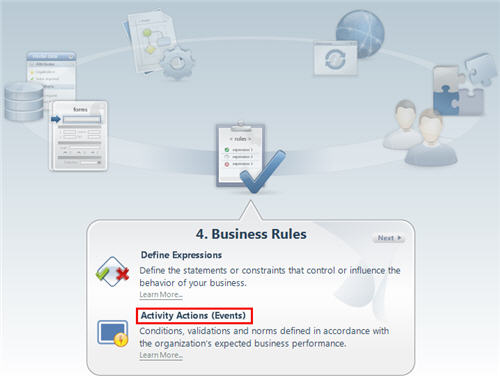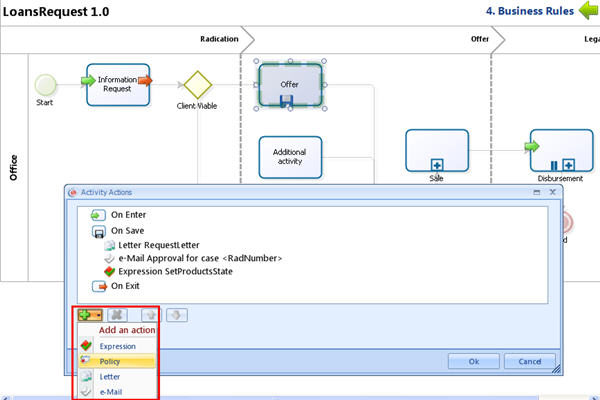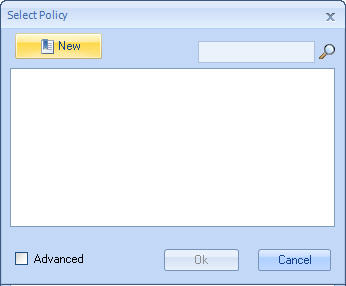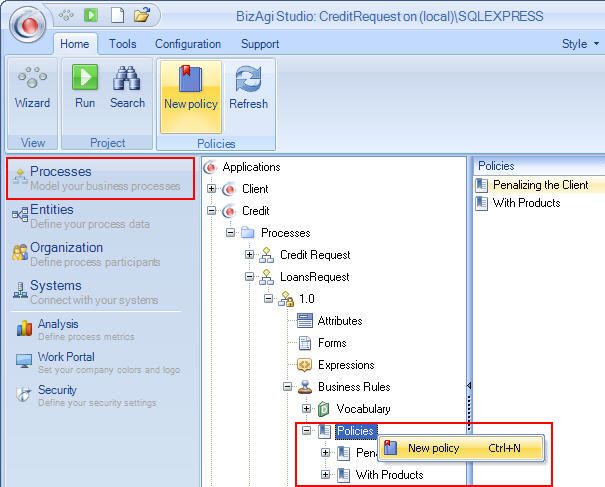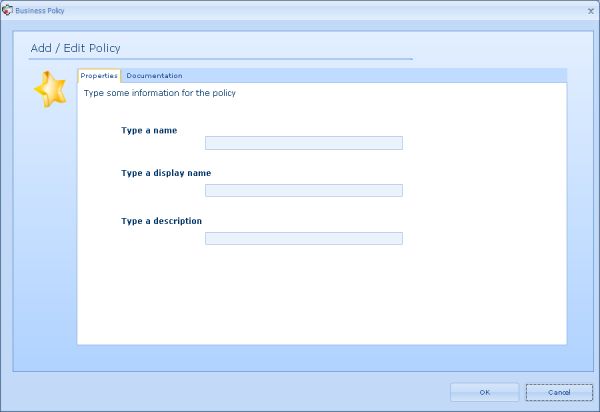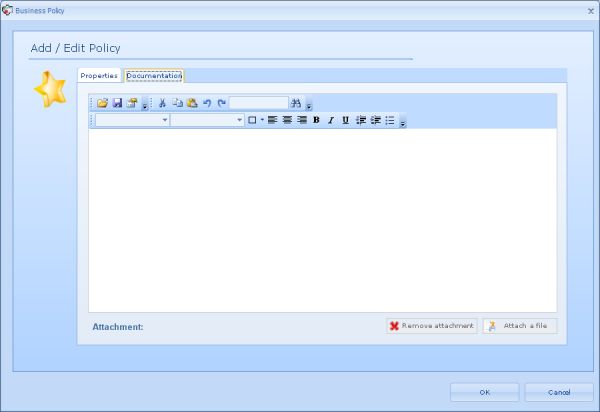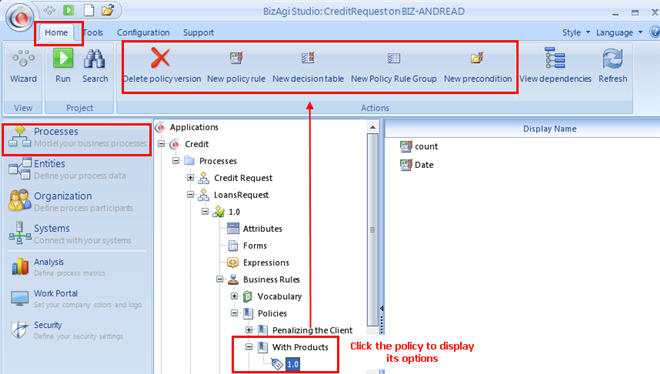Policies
From Business Process Management, BPM and Workflow Automation Wiki | BizAgi BPMS
<keywords content="keywords">
policies, policy, create business policies, policy manager
</keywords>
Contents |
Policies
Policies are made up of one or more rules that evaluate values obtained from the data model (XPath definitions) or Constants. These rules can be grouped in different ways such as decision tables, rule groups or preconditions.
The rules are structured so that an action or an alternative path is executed once a condition has been met.
Business policies can be defined once the Vocabulary has been created. Additionally, Policies can be administered and modified from the Web application.
In this article, the user can find the way to create Process Policies, i.e. Policies that will be available to associate as an action in any activity of the same process.
Policies can be used in a single process but can also be reused and shared between processes. The reusability between processes applies only to Bizagi Enterprise Edition (:NET or JEE). To learn about policy reusability between processes, and applications please follow this link
Policies have three components that need to be understood to use them correctly. Click here to learn more about Policy Components
There are two ways to create vocabulary:
- from the Process wizard
- from the Processes Menu
How to Create a Business Policy from the Process Wizard
1. Go to the Business Rules Step (step 4) and select Activity Actions
2. Click on the shape where the policy is to be created and select On Enter, On Save or On Exit to create the policy
3. Click on the New button on the upper left corner and type a name for the policy.
4. A new window will display the Policy Manager.
Click here to learn the development of Policy rules, Decision tables, Rule Groups and Preconditions
How to Create a Business Policy from the Processes Menu
1. Go to the Processes Menu.
Select the process where the policy is to be created. Then, select Business Rules and then right click on Policies.
Select New Policy
The expressions must be self-explanatory because these expressions or definitions will be used when the policy's rules are configured or edited in the web application.
|
Name: 25 characters is the maximum length of this field. Special characters such as spaces, accents or symbols are not allowed. Display name: The field can have up to 40 characters; special characters are allowed. Description: Contains a brief explanation about the policy. |
3. The Documentation tab can be used to include the information related to the policy. This documentation will be used when any user needs to change the policy. The explanation and documents can be consulted.
The user can attach files by clicking on the button Attach a File on the bottom right corner. To remove an attachment press the Remove Attachment button.
|
Note: Although the documentation of the policy is optional, it is good practice to include it. In additional to the description, the supporting files will enable users to understand the purpose of the policy. |
4. A new window will display the Policy Manager.
Click here to learn the development of Policy rules, Decision tables, Rule Groups and Preconditions
Policy Manager
The Policy Manager allows the user to select the type of Policy to create, edit, delete or modify its information.
There are four types of Policies: Precondition, Rule, Decision table and Rule Group.
If working in the Modules view, these options will be shown in the Home tab, of Bizagi Studio's main Menu
Each Policy type is described in the following links:
- Policies Rules: Policies rules are used to evaluate simple business conditions; an action is executed when the condition is fulfilled. These rules are based on “If” and “Else”.
- Decision tables: Decision tables are a combination of business conditions to execute an action based on the intersections of the conditions.
- Rule Groups: Rule Groups organize policy rules that have similar purposes to keep them together.
- Preconditions: Preconditions are components that enable decision trees to be created within the policy with a simple interface. This component generates the hierarchy within the items, to organize the execution and logic of several items.
Manage Policies in Production
Once deployed, it is possible to edit policies in the production environment through the Work Portal.
Click for more information about manage policies in production
Related Articles
- Business Policies
- Vocabulary
- Business Policies Components
- How to Edit and Delete Policies
- Policy rules, Decision tables, Rule Groups and Preconditions
- Application Policies
- Reusable Policies and Expressions
- How to throw validation errors in the web application from a policy
<comments />
